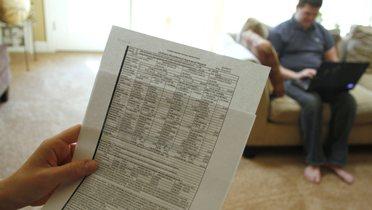Young people in America face an economic landscape marked by increasingly expensive higher education costs, more frequent job changes, and greater personal responsibility for retirement savings. It is more important than ever that youth are financially literate in order to navigate the many difficult decisions they will face during their lifetimes. Unfortunately, levels of financial literacy are persistently low among American youth.
We have conducted a review of large-scale public and private efforts to provide financial education to students from kindergarten through high school. The main goal of this review is to identify gaps in access to high-quality financial education. In order to do this, we first select a set of criteria to evaluate state-level financial education. These criteria fall into three broad categories:
- State standards. Whether a state formally identifies student financial literacy as a goal and specifies concepts and skills that should be taught is a clear indication of how important the state considers this subject. We separately consider high school standards for financial literacy and standards for students prior to high school, which may have an impact on the development of foundational knowledge and skills.
- Course requirements. State mandates that determine how financial education curricula are offered to students are a useful measure of how standards are implemented. We separately examine whether a course that covers core financial literacy concepts must be offered by schools, taken by students, and is primarily focused on financial literacy (e.g., is not just a unit in an economics course).
- Teacher preparation. How a state prepares and equips teachers to provide financial education can affect student success in the classroom. Therefore, we consider whether states offer professional development and resources to teachers who provide financial literacy instruction.
A comparison of states across these criteria can be found below.
Download data from this graphic
Overall, we find large variation in state-level financial education efforts across the United States: a few states—like Utah, Missouri, and Tennessee—have strong financial literacy education policies, but most have significant room for improvement. Although there are almost certainly districts and schools that provide high-quality financial education in every state, these state-level standards and policies constitute a baseline for the amount and quality of instruction that students receive. Some evidence also suggests that more rigorous approaches to financial education at the state level are associated with more exposure to financial concepts and skills as well as greater financial literacy. We believe that our research provides policymakers with an outline of how they can improve financial education in their state and have a positive impact on students.
In addition, we describe a number of large-scale organizations, programs, and curricula that teach and promote youth financial literacy at the K-12 level. These represent a starting point for policymakers (at the state or local level), school administrators, or educators to improve youth financial literacy.
The full research brief can be found here.
In a second report, we review the evidence on different approaches to youth financial literacy. Based on this analysis, we make recommendations for education program design and future research efforts. Our white paper can be found here.
Brookings is committed to quality, independence, and impact in all of its work. Activities supported by its donors reflect this commitment and the analysis and recommendations are solely determined by the scholar. Support for this publication was generously provided by Fidelity Investments.








